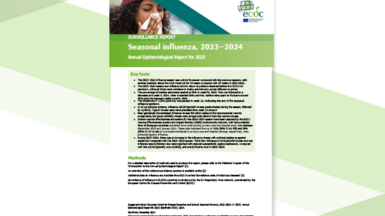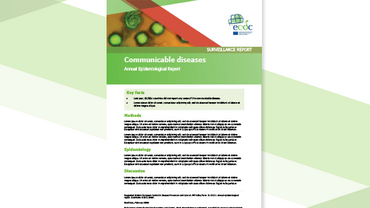Weekly influenza surveillance overview January 7, 2011 - Week 52
Generally, reporting of influenza has been less complete over weeks 51 and 52 due to the holiday period, which reduces consulting rates and reporting to national centres and subsequently onto ECDC. Nevertheless, in week 52/2010, 15 of the 25 countries reported increasing trends of influenza activity.
After little change in week 51/2010, the percentage of sentinel specimens that tested positive for influenza rose to 46% in week 52/2010, indicating rising intensity. For combined sentinel and non-sentinel influenza positive specimens, 73% were type A and 27% were type B. Ninety-eight percent of sub-typed influenza A viruses were A(H1N1) 2009.
In week 52/2010 six countries reported 56 SARI cases, of which 22 were known to have been infected by the A(H1N1) 2009 virus.
Executive Summary
During week 52/2011 (26 Dec 2011 - 1 Jan 2012) the annual seasonal influenza began in some countries in Europe though intensity remains low as yet in all countries reporting.
Of 380 sentinel specimens collected during week 52/2011, 23.4% tested positive for influenza viruses, more than double the percentage reported in week 51. This influenza season is characterised by the dominance of A(H3N2) viruses though A(H1N1)pdm09 viruses are significant among the severe cases reported. Further information can be found in ECDC’s Weekly influenza surveillance overview and the ECDC/CNRL Report on Influenza virus characterisation, December 2011.
To date most viruses detected have been of the A(H3) type with only a few of the A(H1)pdm09 type from the pandemic although they remain a significant number of the severe cases reported. The match with the current vaccine strains is reasonable and though the numbers tested are limited there is little indication of antiviral resistance to oseltamivir or zanamivir.
In addition, following reports of a human fatality due to avian influenza (A(H5N1)) in China’s Guangdong province, the European Commission requested an assessment of risk of human-to-human transmission. ECDC does not consider there is any change to the previous assessments that the risk for EU/EEA countries is very low.






